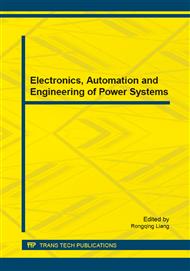p.707
p.714
p.720
p.726
p.732
p.736
p.740
p.744
p.748
Based on LabVIEW Three-Stage Current Computer Protection Experimental System
Abstract:
Current microcomputer protection experimental system is created based on LabVIEW. Each module was created based on the modular thinking (data acquisition module, start module, algorithm module). Functions of microcomputer protection were implemented. Fault data was generated by fault simulation software MATLAB. LabVIEW controls and loop structure achieved simulating a variety of action logical relationship of computer protection. This system had many advantages, such as visibility, controllability, authenticity and flexibility. The system was able to verify the performance of computer protection at different fault. The system was also able to analyze the situation of computer protection maloperation and misoperation, thus it further provided teaching platform for the three section current microcomputer protection experiment.
Info:
Periodical:
Pages:
732-735
Citation:
Online since:
February 2015
Authors:
Price:
Сopyright:
© 2015 Trans Tech Publications Ltd. All Rights Reserved
Share:
Citation:


